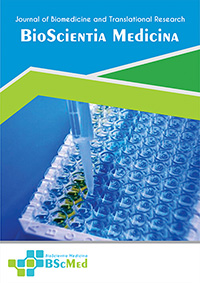Main Article Content
Abstract
Background: Bronchopulmonary dysplasia (BPD) is the most common, serious morbidity of prematurity, frequently complicated by a protracted and difficult weaning process from respiratory support. Refractory weaning failure, defined as a lack of response to conventional BPD therapies, should trigger a broad investigation for non-pulmonary, systemic confounders.
Case presentation: We present the case of a 1,480-gram, 35+4 weeks' gestation female infant with severe hyaline membrane disease who subsequently developed moderate-to-severe BPD. The infant exhibited refractory respiratory failure, failing multiple extubation attempts, and showing no clinical improvement despite standard BPD management, including a 15-day course of furosemide. On day 58, investigation for worsening cholestasis incidentally revealed a 1.3 cm obstructive right renal calculus with severe hydronephrosis and acute pyelonephritis. This finding, coupled with evolving "elfin" facies, prompted a systemic workup. Key confirmatory data included severe hypercalcemia (13.4 mg/dL) and an echocardiogram revealing supravalvular aortic stenosis (SVAS). These findings, along with a characteristic phenotype, established a clinical diagnosis of Williams Syndrome. The infant rapidly developed urosepsis and anuric acute kidney injury (AKI), culminating in irreversible respiratory failure.
Conclusion: This case provides a definitive clinico-pathological correlation for a rare and fatal triad. The severe nephrolithiasis is explained by a "two-hit" mechanism: baseline idiopathic hypercalcemia from Williams Syndrome, massively amplified by iatrogenic hypercalciuria from furosemide therapy. The patient's demise was a direct consequence of lung-kidney crosstalk, wherein the obstructive urosepsis and AKI induced a fatal inflammatory and hydrostatic pulmonary edema that overwhelmed the infant's BPD-compromised lungs.
Keywords
Article Details
As our aim is to disseminate original research article, hence the publishing right is a necessary one. The publishing right is needed in order to reach the agreement between the author and publisher. As the journal is fully open access, the authors will sign an exclusive license agreement.
The authors have the right to:
- Share their article in the same ways permitted to third parties under the relevant user license.
- Retain copyright, patent, trademark and other intellectual property rights including research data.
- Proper attribution and credit for the published work.
For the open access article, the publisher is granted to the following right.
- The non-exclusive right to publish the article and grant right to others.
- For the published article, the publisher applied for the Creative Commons Attribution-NonCommercial-ShareAlike 4.0 International License.





